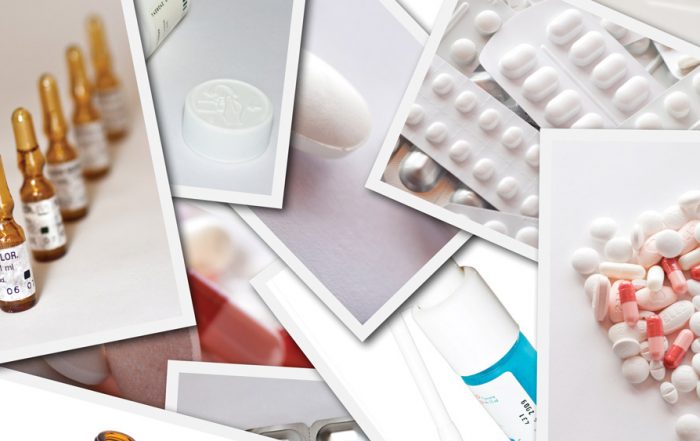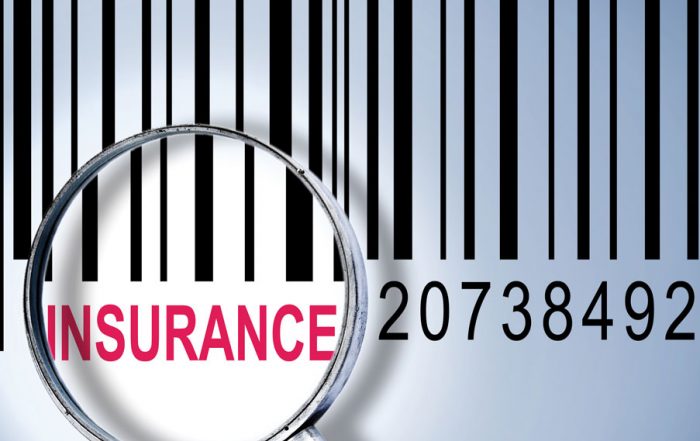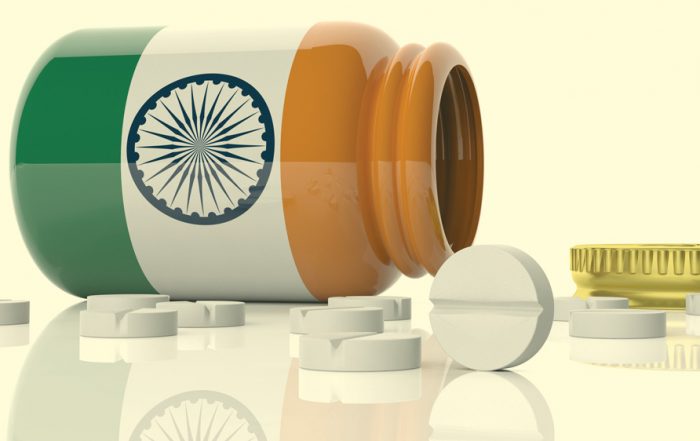
The “New” NDC: Are You Aware of FDA’s Rollout of the New Unique Medical Device Identifier (UDI) and Its Potential Future Impact on Payer Claims Forms?
by Lynn Shapiro Snyder and Lauren A. Farruggia
On September 24, 2014, The U.S. Food and Drug Administration (FDA) issued its final rule on establishing the framework for an ambitious Unique Device Identification System.1 The plan, which will take several years to fully implement, seeks to identify most medical devices through distribution and use.2 Ultimately, the unique device identifier (UDI) system will require most medical device manufacturers to include a UDI on the medical device’s labeling in human- and machine-readable form, and to submit medical device product information to FDA’s Global Unique Device Identification Database (GUDID).3 FDA hopes that this UDI system will reduce medical errors, simplify the integration of medical device use information into data systems, provide faster identification of individual medical devices with adverse events, create faster solutions for reported problems, facilitate more rapid recalls, and improve FDA safety communication.4
 The UDI system’s creation fulfils a statutory requirement under Federal Food, Drug, and Cosmetic Act (FDCA) Section 519(f), amended by the Food and Drug Administration Amendments Act of 2007 (FDAAA) and the Food and Drug Administration Safety and Innovation Act of 2012 (FDASIA), which places particular emphasis on requirements related to Class III medical devices and “implantable, life-supporting, or life-sustaining” medical devices of all classes.5 For manufacturers of lower risk medical devices and for some unclassified devices, FDA already has extended compliance dates for their UDI system requirements.6
The UDI system’s creation fulfils a statutory requirement under Federal Food, Drug, and Cosmetic Act (FDCA) Section 519(f), amended by the Food and Drug Administration Amendments Act of 2007 (FDAAA) and the Food and Drug Administration Safety and Innovation Act of 2012 (FDASIA), which places particular emphasis on requirements related to Class III medical devices and “implantable, life-supporting, or life-sustaining” medical devices of all classes.5 For manufacturers of lower risk medical devices and for some unclassified devices, FDA already has extended compliance dates for their UDI system requirements.6
While all signs point to FDA’s full UDI rollout taking quite a long time, once fully implemented, the UDI system could operate much like FDA’s National Drug Code (NDC), which has catalogued all drugs “manufactured, prepared, propagated, compounded, or processed” for commercial distribution since the Drug Listing Act of 1972.7 And, much like the NDC, UDIs may one day be integrated on universal health insurance claims forms.
Indeed, in July 2016, FDA and Centers for Medicare & Medicaid Services (CMS) officials asked the Accredited Standards Committee X12 (ASC X12, the organization responsible for setting electronic claims standards) to consider capturing implantable UDI information on the next version of its claims forms.8 In February 2017, ASC X12 issued its recommendation, agreeing that UDI information should be included on claims forms when a “high risk implantable device” is implanted or removed.9 ASC X12’s recommendation does not yet apply to lower risk medical devices in Class I and II.
Supporters of FDA, CMS, and ASC X12’s recommendations laud the UDI inclusion plan as a step in the right direction for patient safety and health care cost reduction, while opponents point out that the expensive, required electronic health record (EHR) system upgrades needed to support UDI data integration could be prohibitive for some institutions. These industry cost concerns should not be ignored, but ultimately, inclusion of implantable UDI data on claims forms is consistent with NDC electronic claims processing and could streamline medical device safety tracking. It is unclear what effect it could have in the future on reimbursement.
Pathway to Inclusion of UDI Data on Payer Claims Forms
FDA’s proposed and final UDI rules do not address inclusion of UDI data on payer claims forms.10 FDA’s final UDI rule does, however, set the stage for such inclusion by outlining integration of medical device use information into electronic data systems in, for example, computerized physician order entry.11 FDA’s final UDI rule also makes clear that FDA prioritizes UDI labeling and GUDID reporting requirements for Class III devices, particularly those which are life sustaining or implantable.12 FDA considered, as a lowest-cost alternative to the finalized UDI scheme, requiring that only Class III devices include UDIs on labeling, but abandoned this position in favor of a more comprehensive system.13 After FDA issued the final UDI rule, FDA required Class III device labels and packages to bear a UDI by September 24, 2014.14 FDA then required the labels and packages of implantable, life-supporting, and life-sustaining medical devices of all classes to bear a UDI by September 24, 2015.15 Class I and unclassified medical devices now have until September 24, 2020 to add UDIs to medical device labels and packages.16 FDA could extend the deadline even further if there is industry pushback.
Even in the early years of development, some have fought for an FDA and CMS partnership to include UDI data in payer claims forms, particularly for Class III and implantable, life-supporting, and life-sustaining medical devices. In December 2014, Senators Chuck Grassley (R-Iowa) and Elizabeth Warren (D-Mass.) wrote a letter to then-CMS Administrator Marilyn Tavenner, stating that “[i]n order to achieve all the benefits of the new UDI system for our nation’s seniors . . . UDI information must be incorporated into electronic health information.”17 In August 2015, the two wrote to Department of Health and Human Services (HHS) Inspector General Daniel Levinson, expressing hope that incorporating UDI data into EHRs could reduce Medicare costs by identifying device malfunctions and facilitating recalls faster, and providing proper reimbursement to hospitals, device manufacturers, and CMS.18 In March 2016, the Senators wrote to HHS, FDA, and CMS again, asking for an update on the partnership and emphasizing how inclusion could “help protect the integrity of the Medicare program.”19 FDA’s and CMS’s July 2016 letter to ASC X12 emphasizes that inclusion would not only improve evaluation of product performance and surveillance in individual patients, but would also “[h]elp providers and certain payers to calculate and compare total costs and outcomes based on the device model used” and “[s]upport program integrity by . . . track[ing] rebates from manufacturers back to the payer or provider.”20
In early 2017, ASC X12 agreed with the Senators, FDA, and CMS, and gave the green light for including UDI data on insurance claims forms when “the provider and payer have mutually agreed or are mandated by law to exchange the information” after a medical device is implanted or removed for fear of failure.21 Adding UDI data to claims forms may take some time to come to fruition: ASC X12’s recommendations currently are undergoing consideration before CMS will promulgate a final rule.22 If UDI data is not included on the claims template to be released in 2021, it may take another ten years before integration could occur.23 Actual integration of UDI data into EHRs, however, remains a separate challenge.
Advocates and Opponents of UDI Data Inclusion
Proponents of UDI data integration on payer claims forms point to the system’s ability to “track down faulty medical devices before they can hurt people,” much like the way in which drug products can be identified and reported using its NDC universal product identifier.24 These advocates assert that the analogous medical device system could reduce Medicare costs by identifying recalled or failed devices and by eliminating the subsequent claims payout. In September 2016, HHS OIG determined that, after its own study of seven failed or recalled cardiac implants, Medicare paid $1.5 billion in costs associated with the defective devices.25 Proponents further argue that UDI data integration on payer claims forms submitted through EHR systems could reduce this tremendous financial burden by expediting the conveyance of safety information between device manufacturers, providers, and CMS. Supporters of these measures include some medical device manufacturers, medical associations such as the American Academy of Orthopedic Surgeons and the American College of Cardiology, as well as health plan organizations like the Alliance of Community Health Plans, Intermountain Healthcare, Mercy, and Aetna.26
On the other hand, the Advanced Medical Technology Association (AdvaMed, the trade association of medical device manufacturers) opposes UDI data inclusion on payer claims forms, for it fears that it would be too difficult to properly analyze UDI data and provider claims information, which could lead to “ill-informed decisions about the continued use of an important medical device” and an unnecessary regulatory burden on providers.27 Other health care organizations balk at the proposal because of the necessary technology upgrades required to existing EHR systems, as many EHR systems cannot currently record UDIs.28 However, a 2015 final rule compels EHR systems to be able to record and display UDIs for implantable devices in order to remain federally certified under HHS’s Office of the National Coordination for Health Information Technology (ONC) certification program.29 Accordingly, EHR systems that cannot read UDI data risk losing ONC certification.30 Moreover, potential FDA enforcement actions for failing to adequately label a medical device in accordance with FDA’s UDI requirements include seizure, injunction, and civil and criminal penalties.31
***
If FDA’s UDI rollout goes according to plan, UDIs will one day carry the same industry standard weight as NDCs.32 Although the framework will take some time to solidify, inclusion of UDI data on payer claims forms may one day become ubiquitous. ASC X12’s public comment period on its recommendation ended on May 2, 2017, but to date, ASC X12, FDA, and CMS have not provided any update.33 Once the agencies consider ASC X12’s recommendations and public feedback, CMS may issue a proposed rule incorporating whatever changes were recommended.
Medical device manufacturers, payers, and other interested stakeholders have several opportunities to participate in FDA’s and CMS’s rollout of the addition of UDI data to payer claims forms. Interested parties with general questions about ASC X12’s recommendations can contact the committee via email at
[email protected]. Interested parties can reach out to FDA’s UDI Help Desk34 for specific questions about the UDI program. Finally, interested parties can subscribe to CMS’s email update service35 to keep track of any UDI-related CMS proposed rules.
- 78 Fed. Reg. 58,786 (Sept. 24, 2013), amending 21 C.F.R. Parts 16, 801, 803, 806, 810, 814, 820, 821, 822, 830.
- Id.; FDA, Unique Device Identification – UDI, https://www.fda.gov/medicaldevices/deviceregulationandguidance/uniquedeviceidentification/ (last updated June 2, 2017). FDA has carved out specific exceptions and alternatives for some devices; for example, Class I cGMP-exempt devices. See 78 Fed. Reg. at 58,797-806.
- 78 Feg. Reg. at 58,786.
- Id. at 58,786-87.
- Id. at 58,786; see also FDA, List of Medical Devices, by Product Code, that FDA classifies as Implantable, Life-Saving, and Life-Sustaining Devices for purposes of Section 614 of FDASIA amending Section 519(f) of the FDC Act, https://www.fda.gov/downloads/MedicalDevices/DeviceRegulationandGuidance/UniqueDeviceIdentification/UCM382463.pdf (last updated Mar. 2015); FDA, Compliance Dates for UDI Requirements, https://www.fda.gov/MedicalDevices/DeviceRegulationandGuidance/UniqueDeviceIdentification/Compliancedates forUDIRequirements/default.htm (last updated June 2, 2017).
- See FDA Letter to Device Labelers, https://www.fda.gov/downloads/MedicalDevices/ResourcesforYou/Industry/UCM561575.pdf (June 2, 2017).
- FDCA § 510(p); FDA, National Drug Code Directory, https://www.fda.gov/drugs/informationondrugs/ucm142438.htm.
- Letter from Andrew M. Slavitt, Acting Administrator, CMS, and Robert M. Califf, M.D., Commissioner, FDA, to Gary Beatty, Chair, ASC X12, http://www.modernhealthcare.com/assets/pdf/CH106132714.PDF (July 13, 2016). The affected forms include Health Care Claim: Professional (837P), http://forums.x12.org/007030-change-logs/X323-change-log.pdf, Health Care Claim: Institutional (837I), http://forums.x12.org/007030-change-logs/X324-change-log.pdf, Health Care Claim: Dental (837D), http://forums.x12.org/007030-change-logs/X325-change-log.pdf, and Health Care Service: Data Reporting (837R), http://forums.x12.org/007030-change-logs/X326-change-log.pdf.
- Alan Rubenfire, Standards Committee Pushes for Device IDs on Insurance Claims, Modern Healthcare, http://www.modernhealthcare.com/article/20170201/NEWS/170209989 (Feb. 1, 2017).
- FDA, Unique Device Identification System; Proposed Rule, Docket No. FDA-2011-N-0090, https://www.fda.gov/downloads/AboutFDA/ReportsManualsForms/Reports/EconomicAnalyses/UCM310427.pdf (2011) (hereinafter Proposed Rule); 78 Fed. Reg. 58,786 (Sept. 24, 2013).
- Id.
- Id. at 58,795 (declining to extend the direct marking requirement for Class III devices beyond one year past the final rule’s publication).
- Proposed Rule at 8, 98.
- 78 Fed. Reg. at 58,816; 21 C.F.R. § 801.20. Class III medical devices required to be labeled with a UDI were required include a UDI as a “permanent mark” on the medical device by September 24, 2016. FDA, Compliance Dates for UDI Requirements, https://www.fda.gov/MedicalDevices/DeviceRegulationandGuidance/UniqueDeviceIdentification/CompliancedatesforUDIRequirements/default.htm (last updated June 2, 2017).
- FDA, Compliance Dates for UDI Requirements, https://www.fda.gov/MedicalDevices/DeviceRegulationandGuidance/UniqueDeviceIdentification/CompliancedatesforUDIRequirements/default.htm (last updated June 2, 2017).
- See FDA Letter to Device Labelers, https://www.fda.gov/downloads/MedicalDevices/ResourcesforYou/Industry/UCM561575.pdf (June 2, 2017). Class I and unclassified medical devices must bear a direct UDI mark by September 24, 2022. Id.
- Letter from Senators Grassley and Warren to Marilyn Tavenner, Administrator, CMS, http://www.pewtrusts.org/~/media/assets/2014/12/lettertotavennerreudi.pdf?la=en (Dec. 22, 2014).
- Letter from Senators Grassley and Warren to The Honorable Daniel R. Levinson, HHS Office of Inspector General, http://ct.symplicity.com/t/wrn/c0eb05d19827b5caab3ff3063c123f24/2057710565/realurl=http://www.grassley.senate.gov/sites/default/files/news/upload/2015.08.06%20UDI%20Letter%20to%20OIG.pdf (Aug. 12, 2015).
- Letter from Senators Grassely and Warren to Sylvia Matthews Burwell, Secretary, HHS, Andy Slavitt, Acting Administrator, CMS, and Robert Califf, MD, MACC, Commissioner, FDA, https://www.grassley.senate.gov/news/news-releases/grassley-warren-seek-update-unique-device-identifier-medical-devices-medicare (Mar. 8, 2016).
- Letter from Andrew M. Slavitt, Acting Administrator, CMS, and Robert M. Califf, M.D., Commissioner, FDA, to Gary Beatty, Chair, ASC X12, http://www.modernhealthcare.com/assets/pdf/CH106132714.PDF (July 13, 2016)
- ASC X12, 837 X324 Institutional Claim, High Risk Implanted or Explanted Device (2016); Adam Rubenfire, Standards Committee Pushes for Device IDs on Insurance Claims, Modern Healthcare, http://www.modernhealthcare.com/article/20170201/NEWS/170209989 (Feb. 1, 2017). Notably, ASC X12 did not refer to a specific medical device class in its recommendation. ASC X12 may only be referring to Class III medical devices, but the recommendations may also apply to the limited number of implantable, life-supporting, and life-sustaining medical devices in Class I and III.
- Michael Mezher, Committee Recommends Adding UDIs to Insurance Claims Forms, Regulatory Affairs Professionals Society, http://www.raps.org/Regulatory-Focus/News/2017/02/03/26763/Committee-Recommends-Adding-UDIs-to-Insurance-Claims-Forms/ (Feb. 3, 2017).
- Id.; Adam Rubenfire, Standards Committee Pushes for Device IDs on Insurance Claims, Modern Healthcare, http://www.modernhealthcare.com/article/20170201/NEWS/170209989 (Feb. 1, 2017).
- Statement of Senator Warren Responding to Announcement of Inclusion of Medical Device UDI on Health Insurance Claims Forms, https://www.warren.senate.gov/?p=press_release&id=1426 (Feb. 2, 2017); see also FDA, National Drug Code Database Background Information, https://www.fda.gov/drugs/developmentapprovalprocess/ucm070829 (last updated Mar. 20, 2017).
- Letter from Daniel Levinson, Inspector General, HHS, to Andrew Slavitt, Acting Administrator, CMS (Sept. 30, 2016).
- Letter from The Pew Charitable Trusts to Seema Verma, Administrator, CMS, and Scott Gottlieb, Commissioner, FDA, http://www.pewtrusts.org/~/media/assets/2017/05/multistakeholder-letter-to-fda-and-cms-on-udi-in-claims.pdf (May 17, 2017).
- Press Release, AdvaMed Statement on UDI on Claims Forms, https://www.advamed.org/newsroom/press-releases/advamed-statement-udi-claims-forms (Feb. 2, 2017).
- Adam Rubenfire & Joseph Conn, Medical Devices Are Finally Marked With Unique IDs. Only a Few Hospitals Can Use Them, Modern Healthcare, http://www.modernhealthcare.com/article/20160917/MAGAZINE/309179999 (Sept. 17, 2016).
- 80 Fed. Reg. 62,601, 62,625 (Oct. 16, 2015), amending 45 C.F.R. Part 170.
- 21 C.F.R. § 170.315(a)(14).
- 78 Fed. Reg. at 58,810.
- See UnitedHealthcare, National Drug Codes Requirement to be Enforced for UnitedHealthcare Commercial and UnitedHealthcare Medicare Solutions Professional Claims (effective Jan. 1, 2017) (requiring NDC codes to be included on UnitedHealthcare Commercial and Medicare Solutions’ claims submitted for reimbursement “as part of [its] effort to reduce overall costs to the health care system.”)
- Press Release ASC X12, Announcing Public Review Periods for 4 Draft Implementation Guides, http://www.x12.org/x12org/prdoc.cfm?Name=1293 (Feb. 1, 2017).
- https://www.fda.gov/MedicalDevices/DeviceRegulationandGuidance/UniqueDeviceIdentification/ucm368904.htm.
- https://www.cms.gov/About-CMS/Agency-Information/Aboutwebsite/EmailUpdates.html.
Update Magazine
September/October 2017









